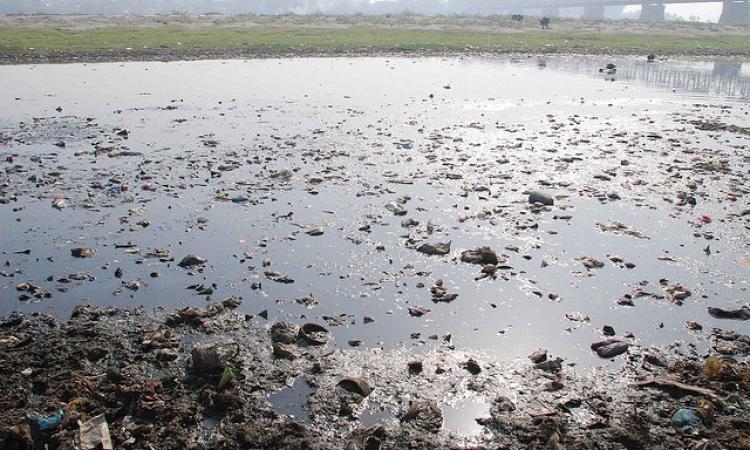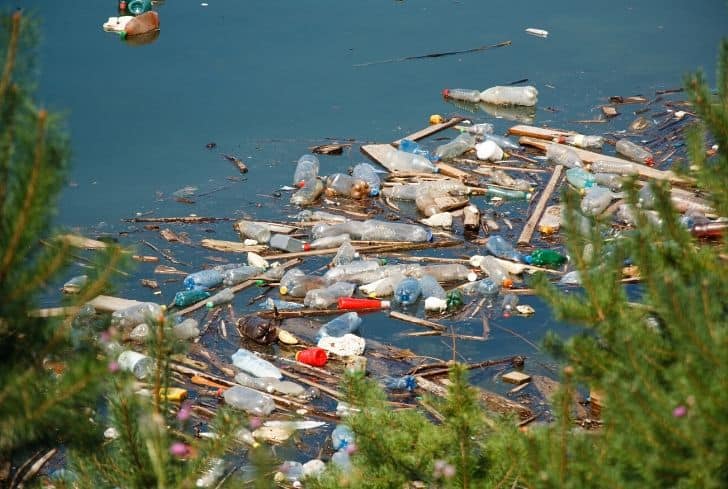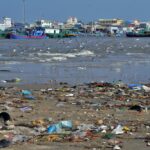Water pollution is the alteration or deterioration of water to the point where it is unusable, that is, harmful for terrestrial consumption and inhospitable for aquatic organisms. Water contamination is another name for it.
In most cases, water pollution is the result of human activity, but it can also be a result of natural calamities.
There are a slew of human activities that have the potential to generate trash or have other unintended repercussions that can contaminate water supplies. Excessive garbage accumulation near water sources, pollution of drains and rivers, indiscriminate animal exploitation, and so on are all examples of polluting practises.
Contaminants Such As Nitrates
Pollutants In The Water Include:
Bacteria, parasites, and viruses are examples of pathogenic microorganisms.
Decomposing animal and vegetable matter, such as faeces, as well as the decomposition of other organic matter.
Salts, acids, and poisonous metals are examples of inorganic substances.
Petrol, gasoline, benzene and kerosene, as well as other hydrocarbons, such as plastics, and insecticides, are all examples of hydrocarbons.
A wide variety of naturally occurring and man-made radioactive compounds are on this list.
The reasons for the water’s contamination
Anthropogenic, or human-caused, pollution has two main sources: natural pollution and pollution caused by man-made activities such as agriculture, industry, and waste disposal.
Water Contamination Caused By Natural Processes
It’s tough to stop natural factors from polluting water, even when humans aren’t involved. The problem is that natural sources are far less common than artificial ones. It’s possible that water pollution is caused by:
For example, if there are long periods of rain or high winds, the pollutants are carried to a water sources by the strong winds and rain.

If there are earthquakes or volcanoes that alter the geology, they encourage harmful substances to be dragged into the oceans. Volcanic ash is one such example.
It is possible to have an abundance of microbes and nutrients in an aquatic ecosystem, but this might have a negative impact on the water quality.
Changing the ecosystem and water quality is the result of saline intrusion into freshwater sources.
Fires: their influence is deemed natural, regardless of whether they were started by humans or not. Deforestation results in a loss of natural drainage containment on the surface, increasing contamination of nearby water sources.
Although oil spills are man-made, they are nonetheless called natural source because oil is a heavily polluting resource. Aquatic life is depleted of oxygen, birds are trapped and fleeced, and water quality is impacted.
Water Contamination Is Caused By Man-Made Sources.
Due to the greater concentration & severity, human-caused water pollution is the most dangerous form of pollution. We’ve included the most significant sources of water contamination here..
Wastewater. All water that has been tainted with detergents, fats, chemicals, faeces, or urine and whose concentration causes environmental harm is considered domestic wastewater. Sewage pipes collect this water, which is then dumped into nearby bodies of water.
Wetland runoff In the absence of pipelines, water is referred to as “residual water” since it is released directly into water sources. This is more common in low-income areas where people lack access to essential services.
There is a lot of garbage. Incorporates material disposed of in waterways, such as trash. An estimated quarter-ton of solid garbage makes its way to the oceans every second, according to a study published in National Geographic. In reality, plastic islands have begun to appear in recent years. Additionally, it is known that water is contaminated by minute plastic fibres.
Industriousness Industrial effluent, which is often contaminated with lead, asbestos, or oil, is the primary focus of this term. Solid waste is also included.
The practise of cultivating crops and livestock. Pesticides and fertilisers used in the crops are dragged through the soil by the agricultural exploitation. Animal excrement, on the other hand, alters the water’s composition after it is cleaned.
Activities involving the navy. Ships that are no longer in service, abandoned ports, and marinas that have been left to deteriorate and oxidise are all included in the definition of marine pollution.
Rain with high acid content. Clouds are naturally acidic when they come into touch with contaminating gases in the atmosphere, even though rain is really a natural phenomena Acid rain has two main effects: it releases gaseous pollutants into the atmosphere, and it then transports those contaminants to nearby waterways.
Effects of polluted water
Polluted water can have a negative impact on human health as well as the environment. The following are among the most significant:
Drinking water shortages are on the rise. As a result of water pollution, animals, including humans, are left without access to clean drinking water, which is a basic human need.
The disease was quickly spreading throughout the community. In both humans and other animals, the ingestion of contaminated water can lead to the spread of a variety of diseases. It’s possible to die as a result. As far as contaminating water is concerned, the most prevalent human illnesses caused by it are:
- Anger.
- The flu is making me sick.
- Dysentery.
- Hepatitis.
- Typhus.
- Schistosomiasis.
- Poliomyelitis.
There’s a problem with foodborne illness. When a living creature ingests tainted water, it also contaminates other living creatures that eat it. Humans can be poisoned, for example, by eating mercury-contaminated fish.
contaminating the earth’s crust. Nutrients there in soil are lost when dirty water is used to water crops. Because of this, the land becomes unusable in the long run.
biodiversity is disappearing. Changes to the water’s ecosystem threaten not only human health but also the survival of aquatic, plant, and animal species that rely on the area for their existence. This results in a shift in the ecosystem’s balance.
Air pollution Evaporation of contaminated water pollutes the air, increasing respiratory illness.
Climate change in the area. Evaporation is reduced when the water’s pH is altered by pollution. As a result, the rain cycle is impacted.



